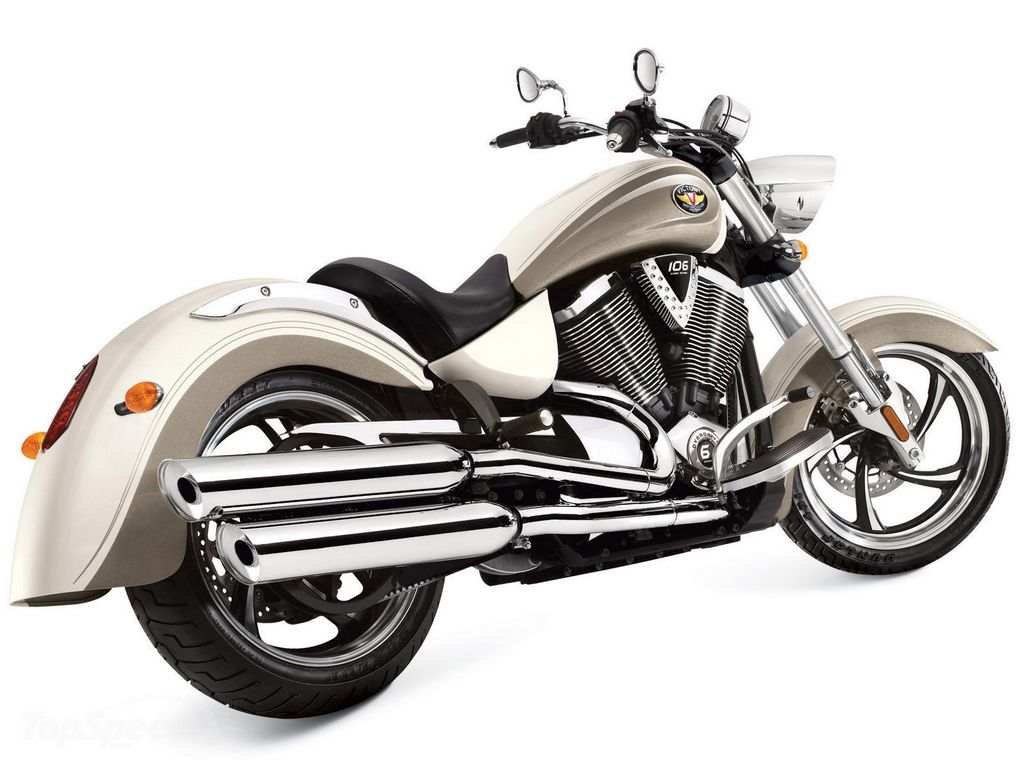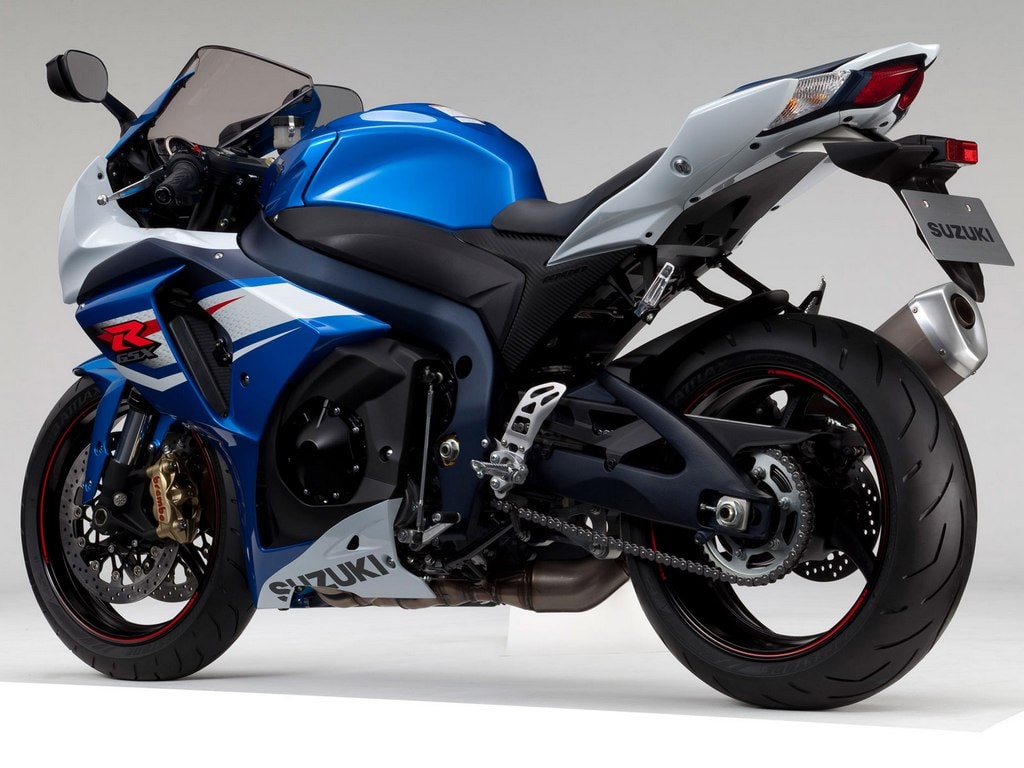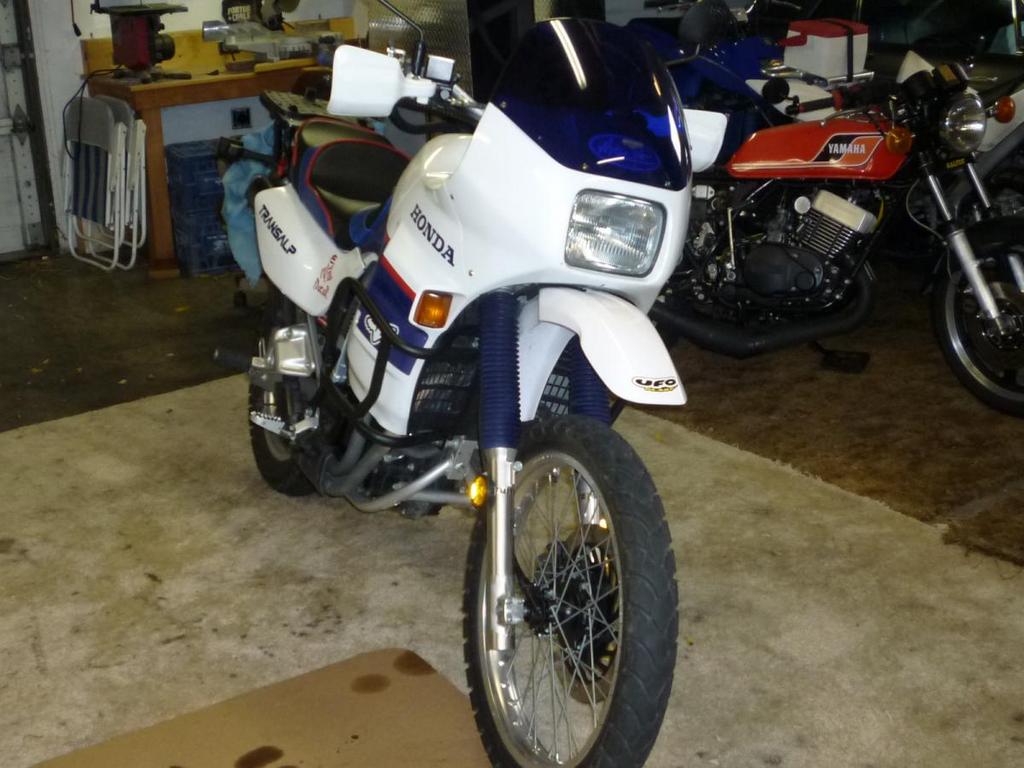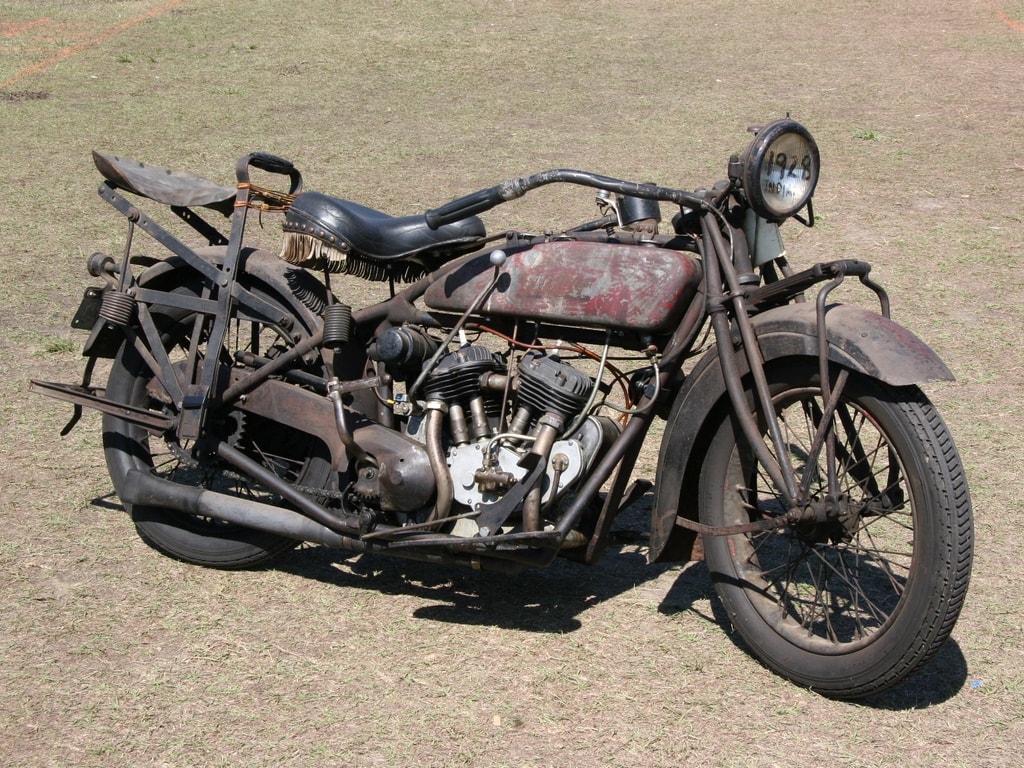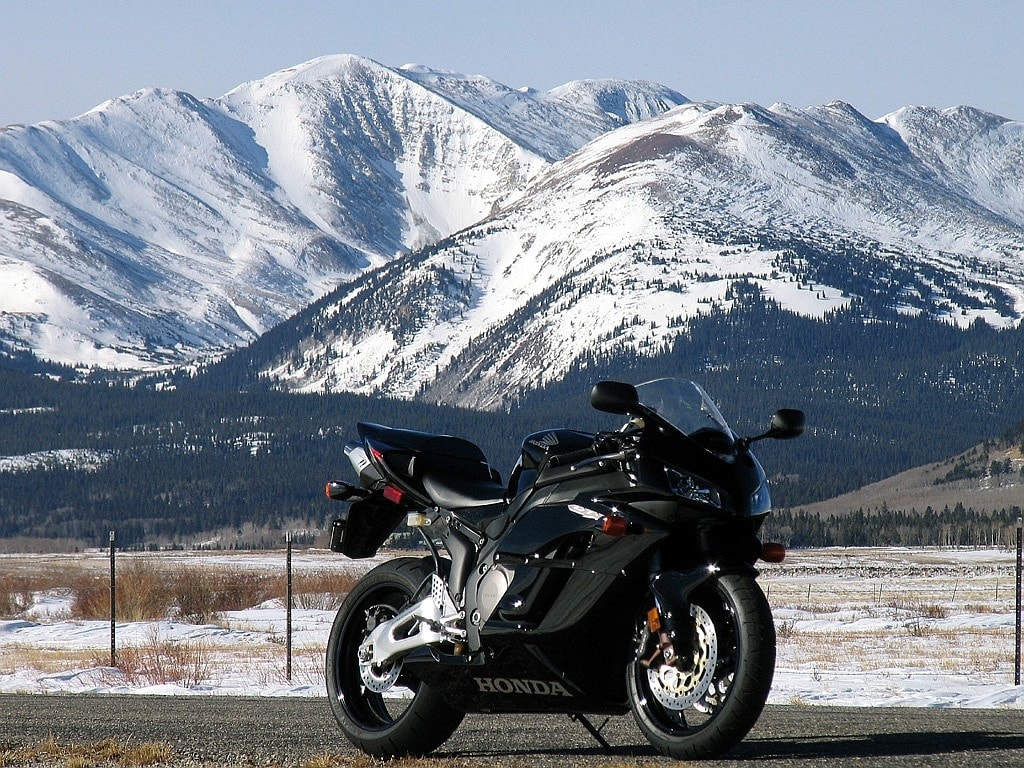Hi there, two-wheeled readers and welcome to the final part of the “How to Choose Your First Bike” guide. During the first two episodes, we covered various aspects which should be considered when thinking about buying a motorcycle for the first time.
After dealing with the initial wave of questions of whether to step in the motorbike world or not, or what kind of a biker would one like to be (episode 1) and the setup possibilities or customization one has to make a bike suit him or her (episode 2), here we are at the end of the series, with just a couple of things left to be looked into.
If you're not on a budget and are one of the few who can afford pretty much any new bike, the $25.000 series included, things are rather simple: just drop by your dealer and make the man happy. Then ride your new bike home (if you're also terribly lucky and yours is in stock) or wait a few days until your new machine is brought in.
However, if you're like the rest of the guys who are on a rather limited budget for their first bike, things can get a bit complicated. If you're somewhat within striking range for a brand new or a “demo” bike, it’s well worth considering spending some extra cash and getting it. After all, a new bike is new and comes with the peace of mind derived from the (possibly extended) warranty and knowledge that the motorcycle has not been crashed and the like.
Of course, in case you're planning to have some things modified on the new bike, you should be very careful with that – most manufacturers are insanely exclusive when it comes to accessories and tuning and will only grant you the warranty when using their own gear, which in most cases is brutally overpriced.
Sidecases and racks, heated grips, modding kits for gear shift and rear brake, touring or double-bubble windshields and all, they come with the manufacturer's seal of approval and retail for prices which can reach ridiculously high margins...and which must also be installed by “agreed” technicians in “agreed” shops.
If you're set on adding parts to the new bike or having some features modified, it is most advisable (and wise) to ask for a price estimation for everything you have in mind; and of course, if all checks out well, go for it!
So much for buying a new motorbike – things are dead-simple: you choose the one you want, maybe get lucky enough to find a color / decals scheme to suit your preferences perfectly and you're set. Just fork out some more dime on protective gear such as boots, trousers and jacket, gloves and the best helmet you can afford, and start having fun.
Depending on the type of bike you want to buy, you'll be surprised to learn how much can prices vary. For example, if you're living a country such as Grece or Italy, where people can ride a bike almost 12 months a year and sport or commuter bikes are to be seen pretty much anywhere, you're in for some really nice bargains, if such a motorcycle is the one you're looking for. Even used bikes which are fairly new and whose mileage is low can be purchased in such places for unbelievably neat prices.
Of course, things can be quite different if you're looking for the wrong bike in the wrong place, and we're not thinking about cons or stolen bikes with fake papers. It's just that in some areas, certain bikes or types of bikes can be very rare and, therefore, pricey.
Even more, if you're looking for some of the motorcycles with a bit of historical character about them, finding one in great condition and being able to get it for a low price seems more like a dream. The same might happen with “status bikes”: if you're thinking about buying a bike more for what it represents rather than to have lots of fun riding it, you might find out that status is no cheap business.
Deciding to go for a used (second-hand) bike comes with a lot of nice advantages, though. First of all, instead of having to choose from a limited number of models or color schemes, you can look into tens, even hundreds of bikes, until you find the one.
For example, if your mind is already set on a 1000cc GSX, going for the current 2012 models, you might find yourself a bit disappointed to find that you can only choose between the legendary white / blue and the black schemes. And since the GSX you fell in love with was the black and red...
At the same time, some bikes change a bit over the years, and it's some details which might make the difference between buying and not buying. And we're not thinking about the dramatic difference between the 1985 Honda Transalp and the 2009 one! I've happened to meet guys who wouldn't agree to change their old bikes for newer ones simply because they considered that the newer models lacked the “spirit” of the older revisions. And you can't blame them!
When searching through lots of used motorcycles, you might be lucky enough to find bikes which already have some of the modifications or additions you're thinking about. Custom racing exhausts are some of the most common modifications one might ever meet in the area of sport bikes. I am quite sure that most of you would gladly get a bike which is already equipped with an aftermarket pipe while paying but a fraction of its price instead of spending some $600-$700 on a brand new one.
It's the same with touring/ racing windshields, heated grips, lower seats or – my favorite – panniers and their racks, as a most worthy addition to a tourer's machine. Myself I bought my second-hand bike equipped with sidecase racks and have paid just a few dollars for them; and getting a used pannier set from a friend for the price of a couple of beers made my day even better!
All in all, it's way better to be able to see, test and finally choose from a larger number of bikes, especially when your funds are limited and you want the best bang for your bucks. And nobody could actually tell for sure whether seeing many different bikes (of which you had no idea they even existed) won’t make you change your mind!
When buying a used motorcycle, the most important thing is its condition. While the outside may be of lesser importance (in case it hasn't been through crashes and the like), damage on the body work can indicate more than meets the eye. Since you want to buy the best bike for your money, choosing one implies some inspection and testing.
For example, if you're buying a '99 touring bike whose fairing is brand new, you have reasons to suspect something. A motorcycle's body work is fairly expensive, especially when compared to the real price of that bike; therefore, you should be asking a lot of questions about this fact.
New plastics can replace the ones which have been totaled in a crash or are simply beyond repair; of course, maybe the owner started to hate the color scheme of the bike and decided it was high time to go from silver to black or red... but such cases are terribly rare. It's the same with a lot of elements, but we'll be detailing where to look and for what when choosing a bike in a special guide later on.
You should be asking the seller a lot of questions before you spend your money, including the service history. Far for being too distrustful, you must think it's your money (or even some loan) which is being spent, so you have all reasons to be as inquisitive as you like.
And since you're a newbie in the two-wheeled world, asking an experienced friend to help you choose and check the bike is one of the best things to do. And if you or your friend have another friend who is a mechanic, don't hesitate to ask for his help and profit from his expertise as much as possible. You'll be glad you did!
Finally, in case you're looking for an old-timer bike and know how to restore it to full working condition and the original (or close to original) looks, then you're probably way more skilled in mechanics than I am and you don't need this guide at all. Nevertheless I hope you enjoyed reading it and even care to share your knowledge with other readers.
Also check the first two parts of this guide:
How to Choose Your First Bike: Episode 1
How to Choose Your First Bike: Episode 2
New or used?
Now, after having decided which way to go as far as the type, make and model of bike you'd like to buy, it's all down to money.If you're not on a budget and are one of the few who can afford pretty much any new bike, the $25.000 series included, things are rather simple: just drop by your dealer and make the man happy. Then ride your new bike home (if you're also terribly lucky and yours is in stock) or wait a few days until your new machine is brought in.
However, if you're like the rest of the guys who are on a rather limited budget for their first bike, things can get a bit complicated. If you're somewhat within striking range for a brand new or a “demo” bike, it’s well worth considering spending some extra cash and getting it. After all, a new bike is new and comes with the peace of mind derived from the (possibly extended) warranty and knowledge that the motorcycle has not been crashed and the like.
Of course, in case you're planning to have some things modified on the new bike, you should be very careful with that – most manufacturers are insanely exclusive when it comes to accessories and tuning and will only grant you the warranty when using their own gear, which in most cases is brutally overpriced.
Sidecases and racks, heated grips, modding kits for gear shift and rear brake, touring or double-bubble windshields and all, they come with the manufacturer's seal of approval and retail for prices which can reach ridiculously high margins...and which must also be installed by “agreed” technicians in “agreed” shops.
If you're set on adding parts to the new bike or having some features modified, it is most advisable (and wise) to ask for a price estimation for everything you have in mind; and of course, if all checks out well, go for it!
So much for buying a new motorbike – things are dead-simple: you choose the one you want, maybe get lucky enough to find a color / decals scheme to suit your preferences perfectly and you're set. Just fork out some more dime on protective gear such as boots, trousers and jacket, gloves and the best helmet you can afford, and start having fun.
Used can mean both dirt-cheap and insanely pricey
On the other hand, if you don't have enough dough to buy a new or “like new” motorcycle, a used one is by far the way to go.Depending on the type of bike you want to buy, you'll be surprised to learn how much can prices vary. For example, if you're living a country such as Grece or Italy, where people can ride a bike almost 12 months a year and sport or commuter bikes are to be seen pretty much anywhere, you're in for some really nice bargains, if such a motorcycle is the one you're looking for. Even used bikes which are fairly new and whose mileage is low can be purchased in such places for unbelievably neat prices.
Of course, things can be quite different if you're looking for the wrong bike in the wrong place, and we're not thinking about cons or stolen bikes with fake papers. It's just that in some areas, certain bikes or types of bikes can be very rare and, therefore, pricey.
Even more, if you're looking for some of the motorcycles with a bit of historical character about them, finding one in great condition and being able to get it for a low price seems more like a dream. The same might happen with “status bikes”: if you're thinking about buying a bike more for what it represents rather than to have lots of fun riding it, you might find out that status is no cheap business.
Deciding to go for a used (second-hand) bike comes with a lot of nice advantages, though. First of all, instead of having to choose from a limited number of models or color schemes, you can look into tens, even hundreds of bikes, until you find the one.
For example, if your mind is already set on a 1000cc GSX, going for the current 2012 models, you might find yourself a bit disappointed to find that you can only choose between the legendary white / blue and the black schemes. And since the GSX you fell in love with was the black and red...
At the same time, some bikes change a bit over the years, and it's some details which might make the difference between buying and not buying. And we're not thinking about the dramatic difference between the 1985 Honda Transalp and the 2009 one! I've happened to meet guys who wouldn't agree to change their old bikes for newer ones simply because they considered that the newer models lacked the “spirit” of the older revisions. And you can't blame them!
When searching through lots of used motorcycles, you might be lucky enough to find bikes which already have some of the modifications or additions you're thinking about. Custom racing exhausts are some of the most common modifications one might ever meet in the area of sport bikes. I am quite sure that most of you would gladly get a bike which is already equipped with an aftermarket pipe while paying but a fraction of its price instead of spending some $600-$700 on a brand new one.
It's the same with touring/ racing windshields, heated grips, lower seats or – my favorite – panniers and their racks, as a most worthy addition to a tourer's machine. Myself I bought my second-hand bike equipped with sidecase racks and have paid just a few dollars for them; and getting a used pannier set from a friend for the price of a couple of beers made my day even better!
All in all, it's way better to be able to see, test and finally choose from a larger number of bikes, especially when your funds are limited and you want the best bang for your bucks. And nobody could actually tell for sure whether seeing many different bikes (of which you had no idea they even existed) won’t make you change your mind!
Choosing wisely is better than rushing to spend your dime
One of the good things about bikes is the fact that one can tell pretty easily whether it has sustained some damage: when dropped, it's the body work (or fairing) which gets the worse. Plastic scratches and breaks relatively easily and hiding the repair marks perfectly is impossible.When buying a used motorcycle, the most important thing is its condition. While the outside may be of lesser importance (in case it hasn't been through crashes and the like), damage on the body work can indicate more than meets the eye. Since you want to buy the best bike for your money, choosing one implies some inspection and testing.
For example, if you're buying a '99 touring bike whose fairing is brand new, you have reasons to suspect something. A motorcycle's body work is fairly expensive, especially when compared to the real price of that bike; therefore, you should be asking a lot of questions about this fact.
New plastics can replace the ones which have been totaled in a crash or are simply beyond repair; of course, maybe the owner started to hate the color scheme of the bike and decided it was high time to go from silver to black or red... but such cases are terribly rare. It's the same with a lot of elements, but we'll be detailing where to look and for what when choosing a bike in a special guide later on.
You should be asking the seller a lot of questions before you spend your money, including the service history. Far for being too distrustful, you must think it's your money (or even some loan) which is being spent, so you have all reasons to be as inquisitive as you like.
And since you're a newbie in the two-wheeled world, asking an experienced friend to help you choose and check the bike is one of the best things to do. And if you or your friend have another friend who is a mechanic, don't hesitate to ask for his help and profit from his expertise as much as possible. You'll be glad you did!
Finally, in case you're looking for an old-timer bike and know how to restore it to full working condition and the original (or close to original) looks, then you're probably way more skilled in mechanics than I am and you don't need this guide at all. Nevertheless I hope you enjoyed reading it and even care to share your knowledge with other readers.
Also check the first two parts of this guide:
How to Choose Your First Bike: Episode 1
How to Choose Your First Bike: Episode 2
